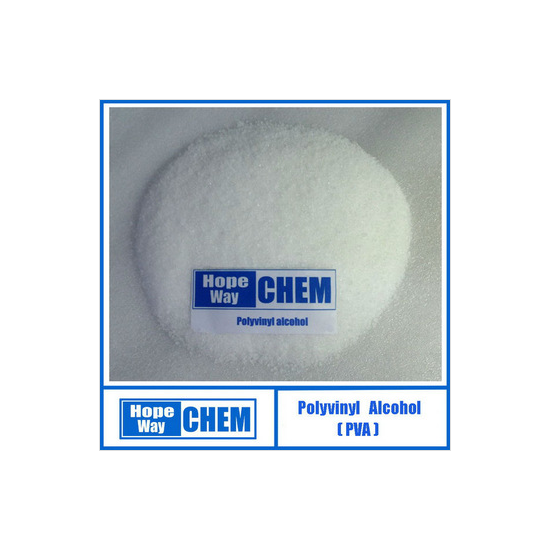- Home >> Polyvinyl Alcohol(PVA) >> polyvinyl alcohol price for 1788,1799,2699, pva

●Good film forming property, without cracking
●Anti-adhesive release effect, even when thinly applied
●Impermeability of PVA film to the organic material used, e.g. styrene
Add 25 ml of N/10 NaOH solution, seal the flask and leave it still for at least 2 hours in room temperature.Add
accurately 25 ml of N/10 H2SO4 solution and titrate back the excess amount of H2SO4 solution present with
N/10 NaOH solution using phenolphthalein as the indicator, until the solution appears in pale pink color.
The volume of N/10 NaOH solution consumed in this titration is a ml. Carry out a blank test separately; the
volume of N/10 NaOH solution consumed in this blank test is b ml.
After swelling, dissolve it completely in a boiling water bath and leave it cool to room temperature. Measure
the viscosity of each solution at 20±0.1°C by Brookfield Viscometer with UL Adapter.Then, measure accurately
the concentration of each solution (Note 1). Report the viscosity (Cps) of 4.00 wt% solution as estimated from
a curve based on the relationship between concentration and viscosity, as follows:
PVA solution of above-mentioned grades can be applied to the mold by brushing or spraying. The viscosity of
the selected grade and concentration determine the thickness of release coating. About 10 to 30 wt % of solid
content is recommended for this purpose. Up to 15% of plasticizer, such as glycerol or ethylene glycol, relatively
to the weight of PVA, can be added to the formulation to improve the flexibility of mold release film.
A review of Polyvinyl Alcohol studies by the Cosmetic Ingredient Review Expert
Panel is available in the published literature (Int. J. Toxicology, 17(Suppl. 5): 67-92
(1998)).The Panel concluded that Polyvinyl Alcohol is safe as used in cosmetic formulations.



